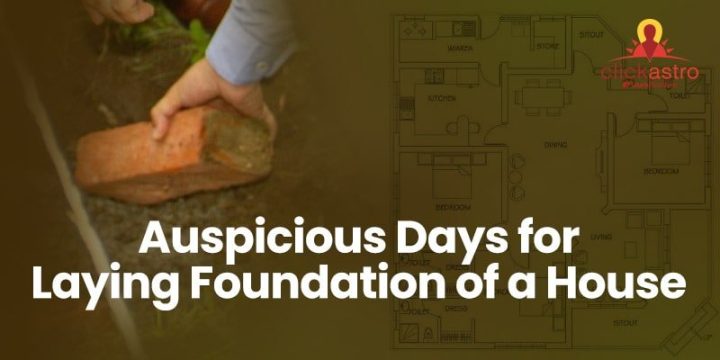Contents[hide]
What is the Bhoomi Puja Ritual?
Before starting to build a new house, Hindus perform a ritual called Bhoomi pooja or Bhoomi pujan worshipping the goddess of the earth, Bhoomi, and Vastu Purusha, the god of directions. Bhoomi pujan, also called Neev Pujan, includes worshipping the five elements of nature. Bhoomi translates as mother earth. Typically, the north-east corner of the construction site is where the Bhumi Puja is conducted. Experts in Vastu recommend starting the site’s excavation in the northeast corner. Before beginning the construction of a house or the tilling of land for agricultural purposes, the Bhoomi pujan ritual is performed. The Bhoomi Puja begins by drawing a 64-part ritualistic diagram representing the Vaastu Purusha using kumkum and seeds. The diagram is drawn in the north-eastern area of the construction site. Each component of this diagram has a connection to a deity. For each deity, mantras are chanted, and offerings are made. A pit is then dug where the first brick is then placed. Usually, the auspicious muhurat is arrived at by referring to the Hindu Panchang. People seek the guidance of a reputable and knowledgeable astrologer when deciding on the ideal muhurat for Bhoomi pujan and house construction. The astrologers typically examine your birth information and horoscope information to determine a date. If an exact birth detail including time, place and date of birth are unavailable, then the priest can also arrive at an auspicious muhurat for Bhoomi pujan using the name rashi. Tithi, nakshatra, and other factors can also help in determining the auspicious muhurat.Significance of Bhoomi Puja
According to Indian tradition, before building any structure, Bhoomi, or mother earth, is worshipped alongside other gods known by the name of Bhoomi puja. The ritual entails placing the cornerstone on the ground and seeking the divine blessings. The purpose of the Bhoomi puja is to worship the goddess of the earth called Bhoomi, as well as Vastu Purusha, the lord of the directions. It also entails the worship of the five elements of nature—earth, wind, fire, sky, and water.Bhoomi puja is a ritual that purifies the land by removing any potential negative energies and Vastu doshas, or defects. The ritual guards against accidents and other unforeseen occurrences for the building or land and all of its occupants. It attracts positive energies and purifies the space, bringing good fortune to the new house’s occupants.
The Bhoomi pooja is also conducted to seek pardon from under-the-ground life forms for any harm that may be unintentionally caused during construction. Laying the foundation for a building is to be done at an auspicious time based on astrological principles and Vastu Shastra.
Rituals of Bhoomi Puja
The majority of first-time homeowners frequently struggle with the complexities of Bhoomi puja rituals and seek out parental and religious guidance. Here are a few more crucial details which you can also refer to. Please note the Bhoomi Puja rituals may vary from region to region; however, these are some of the rituals conducted during the Bhoomi Puja.Identifying and cleansing the Bhoomi Puja site:
The first and most crucial step is to clean the puja site where the Bhoomi Puja will be performed. The puja site is cleansed after having the morning bath. The area should be cleared of dirt and trash holes. The puja site should be cleansed and purified using Gangaajal or holy water.Puja performed by the Priest:
A priest should be present when performing the Bhoomi Pujan because they are well-versed with the mantras to be chanted during the puja. Additionally, they also can assist in removing any Vastu Dosha or bad energies that may cause impediments during the construction work.Facing the Vastu-recommended direction:
One should sit with their back to the east when performing the Bhoomi pujan. The head of the family typically faces east, while the priest faces north.Worshipping Lord Ganesha:
Prayers are offered to Lord Ganesha, the obstacle-remover, at the start of Bhoomi Pujan. Lord Ganesha’s blessings are sought to prevent any obstacles that might slow down the construction.Idols of Snake god and other deities:
The idols of Lord Ganesha, snake god and a Kalash are worshipped after lighting a ghee or oil lamp. It is believed that the Serpent Lord is the ruler of the earth and serves Lord Vishnu which is why people worship the silver snake or the Snake lord. Seeking the snake lord’s blessing ensures his blessings in protecting their home from any harm and before starting the construction.The Kalasha Puja:
The universe is represented by the kalash (pot). The Kalash is filled with water and covered with mango or betel leaves. A coconut is then placed upside-down on top of the kalash. Lord Ganesha and Goddess Lakshmi are worshipped with coin and betel nuts. The purpose of the Kalasha Puja is to direct divine energy on the site in order to attract prosperity and positivity.Bhumi Pooja:
The main Bhoomi puja ritual, which includes the Ganesh Puja, is performed on the auspicious muhurat, which is then followed by a havan. The Snake god is worshipped by chanting mantras and offering milk, curd and ghee. Goddess Lakshmi is worshipped by placing the betel nut and coin inside the Kalash. The Dikpalas or the deities of directions, the Naga and the family deity known as Kula devata are all worshipped during the course of the puja. The Naga mantra is chanted while digging the site. Sweets are then distributed to the guests.Digging:
After digging a small area of the land, the foundation stone or brick is then laid.Offerings:
Offerings of flowers, incense sticks, kalava, raw rice, sandalwood, turmeric, vermillion (Roli), supari, fruits, and sweets should be made during the Bhoomi puja as the priests chant the mantras.Crushing of Lime:
Five limes are placed with four limes in each corner and one in the centre of the Bhoomi Pujan site. They are then crushed after the Bhoomi Puja is performed.Bhoomi Puja Mantra
The Bhoomi Puja involves the worship of a number of different deities. As a result, numerous Bhoomi pujan mantras are recited. The most significant and well-known mantra is“Om Vasundharaya Vidmahe Bhutadhatraya Dhimahi Tanno Bhumih Prachodayat,”
Items or Samagri required for Bhoomi Puja
These are the most common list of items that are required for Bhoomi Puja. The priests may also suggest additional items based on the regional traditions and customs.- Rice
- Coconut
- Darba
- Betel leaves
- Betel nuts
- Flower bunch
- Fruits
- Mishri
- Prasad
- Camphor
- Agarbatti (incense stick)
- Cotton for arti
- Oil or ghee
- Diya (Lamp)
- Water
- Ganga Jal
- Turmeric powder
- Cardamom
- Cloves
- Kumkum
- Roli
- Kalava (red thread)
- Paper towels
- Pickaxe
- Quarter coins
- Kalash
- Mango leaves
- Navratnas (9 types of gems)
- Panchdhatu (5 metals)
- Green limes
- Nava Dhanyam (9 types of seeds)
Who performs the Bhoomi Puja?
The family patriarch and his wife should perform the Bhumi Puja. To perform the puja successfully, it must be done in the presence of a priest who can advise on the most auspicious Bhoomi pujan muhurat.Bhoomi Puja Auspicious Months, Tithis, Nakshatras and Weekdays.
The best months as per the Hindu calendar for performing the Bhoomi Puja are as follows:- Pausha,
- Vaisakha (Baisakh),
- Agrahayana,
- Phalguna,
- Sravana,
- Kartik,
- Maagh
- Bhadrapada.
The auspicious weekdays to perform the Bhoomi Puja are:
- Mondays
- Wednesdays
- Thursdays
- Fridays
Auspicious Nakshatras or Stars to perform the Bhoomi Puja
- Rohini
- Uttara Phalguni (Uthram)
- Uttara Aashaadha (Uthradam)
- Uttara Bhadrapada (Uthrattathi)
- Margashirsha (Makayiram)
- Revathi, Chitra (Chithira)
- Shatabhisha (Chathayam)
- Swati (Chothi)
- Anuradha (Anizham)
- Hasta (Atham)
- Pushya (Pooyam)
- Dhanishtha (Avittam)
Auspicious Lagnas for Bhoomi Puja
- Vrishabh
- Mithun
- Simha
- Kanya
- Vrischika
- Dhanu
- Kumbha
Auspicious Tithis for Bhoomi Puja:
- Dwitiya
- Tritiya
- Panchami
- Saptami
- Dashami
- Ekadashi
- Thrayodashi
- Purnima
Things to be avoided during Bhoomi Puja
There are few things that one must avoid to prevent any mishaps or setbacks to the individual or the family when performing the Bhumi Puja.Days to avoid for Bhoomi Puja:
Tuesdays, Saturdays, and Sundays should be avoided for Bhumi Pujan. For this Bhumi pooja, these days are not thought to be particularly auspicious.Pakshas to be avoided for Bhoomi Puja
When performing the auspicious Bhoomi puja rituals, it is always advisable to avoid the pakshas Divaskarma, Shraadh Paksha, and Hadpaksha.Inauspicious Tithis
- Chaturthi
- Chaturdashi
- Krishna paksha Ashtami
Nithyayogas and Karanas to be avoided for Bhoomi Puja
Inauspicious Nithyayogas
- Vishkamba
- Athigandha
- Soola
- Gandha
- Vyaghata
- Vajra
- Vyathipatha
- Parikha
- Vaidhrithi
Inauspicious Karanas
Vishti Apart from these common Panchanga shuddi checks, the general astrological quality based on the horoscope for the moment is also analysed. Also, the factors such as Solar and Lunar eclipses, Sankranti and Sandhyakalam are considered.The ritual steps in construction and agriculture
- Bhoomi Pooja: The worship of Mother Earth
- Balidaana: The sacred sacrificial ritual.
- Hala Karshaana: The levelling of a construction site.
- Anukuraa-Roopana: The ritual of sowing of seeds.
- Shilaanyaasa: Laying of the foundation stone.
- Digging of a well or water source.
- Fixing of the door frames
- Griha Pravesh: Entering the new home.






